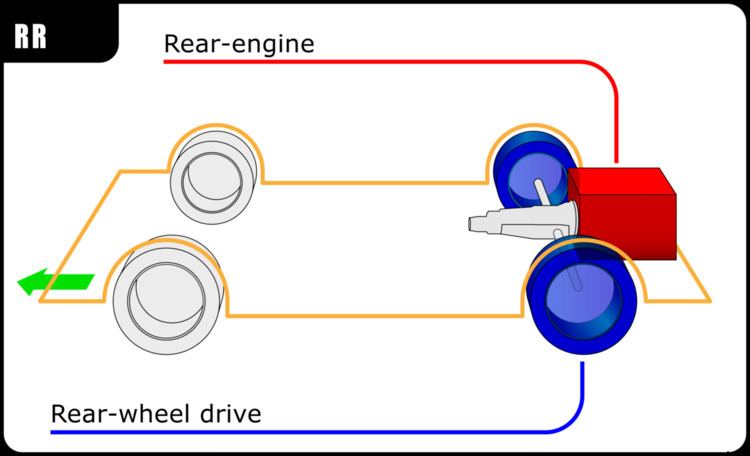 | ||
In automobile design, a rear-engine design layout places the engine at the rear of the vehicle. The center of gravity of the engine itself is past the rear axle. This is not to be confused with the center of gravity of the whole vehicle, as an imbalance of such proportions would make it impossible to keep the front wheels on the ground.
Rear-engined cars are almost always rear wheel drive, a layout known as RR. The exception is certain high performance four wheel drive models from the German automaker Porsche. This layout is chosen for three reasons - packaging, traction, and ease of manufacture:
A rear wheel drive, rear engine car tends to be prone to oversteer which allows for tighter turner radius than that of a neutral or understeer condition of a vehicle, however this causes vehicle instability. For this reason rear engine has been abandoned as a design option for regular passenger cars, but still maintains a viability for race applications.
Although this layout was once popular, it was mainly found in small, inexpensive cars and light commercial vehicles. Most car makers have abandoned the rear-engined layout apart from Porsche who has gradually developed their design with improvements to the suspension and chassis to reduce the shortcomings of the layout to exceptional levels in road and race cars.
The most popular current application of this layout is in low-floor buses where its space-saving attributes are best applied.
On the DeLorean DMC-12, to compensate for the uneven (35/65) weight distribution caused by the rear-mounted engine, the car had rear wheels with a diameter slightly greater than the front wheels.
